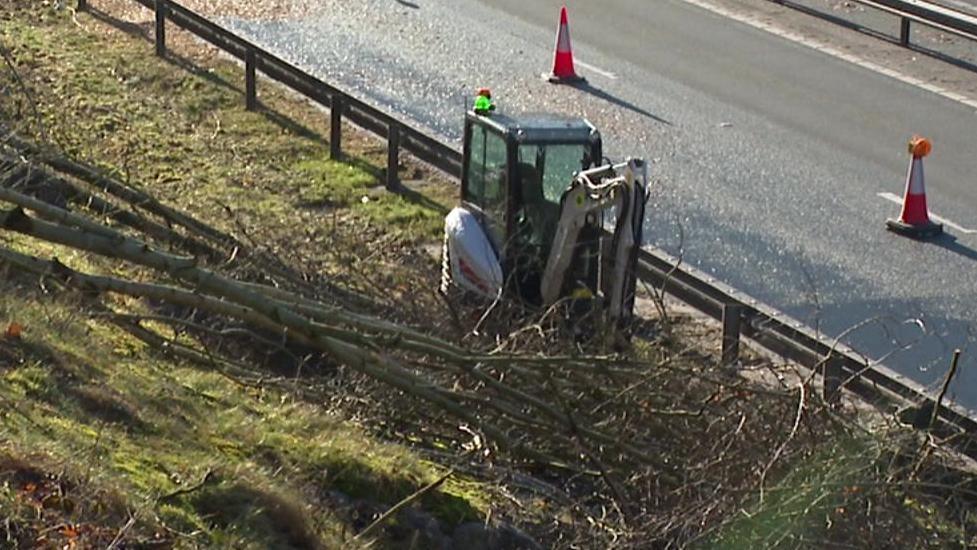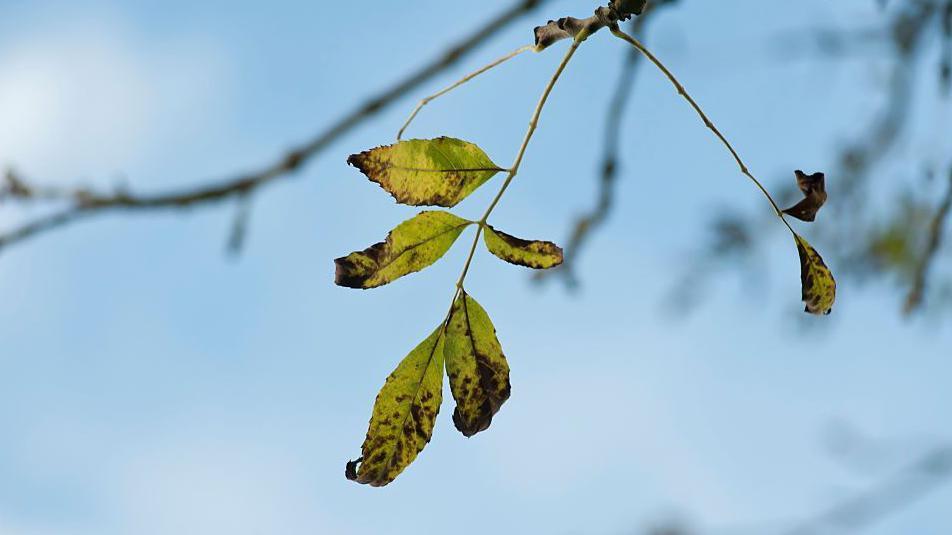Trees near roads felled to combat ash dieback

Cumberland Council is removing trees which have been infected with ash dieback
- Published
Trees growing near roads are to be cut down in response to the spread of ash dieback.
Cumberland Council has found several areas where ash trees have been infected with the disease and need maintenance or removal.
Ash dieback poses a safety risk to drivers as it causes the trees to become brittle, meaning they can fall or shatter without warning.
The council said felling trees was a "last resort" and it only removed those which were "dead, dying, diseased or dangerous".
Ash dieback has been described as the worst tree disease since the Dutch elm outbreak in the 1970s and it is predicted about 90% of ash trees in the UK will be infected within the next decade.
Ash trees are a dominant species along roadsides in Cumbria, meaning the council has had to survey its network of A, B and C roads to check they are safe.
Those living in areas where infected trees need to be removed will receive letters detailing how the removal will be carried out.
Last year, National Highways announced it was planning to cut down between 12,000 and 15,000 trees to protect motorists.
This work included felling around the M6 and the A590 in Cumbria.
Follow BBC Cumbria on X, external, Facebook, external, Nextdoor and Instagram, external.
Get in touch
Do you have a story suggestion for BBC Cumbria?
Related topics
- Published26 June

- Published28 April 2024
